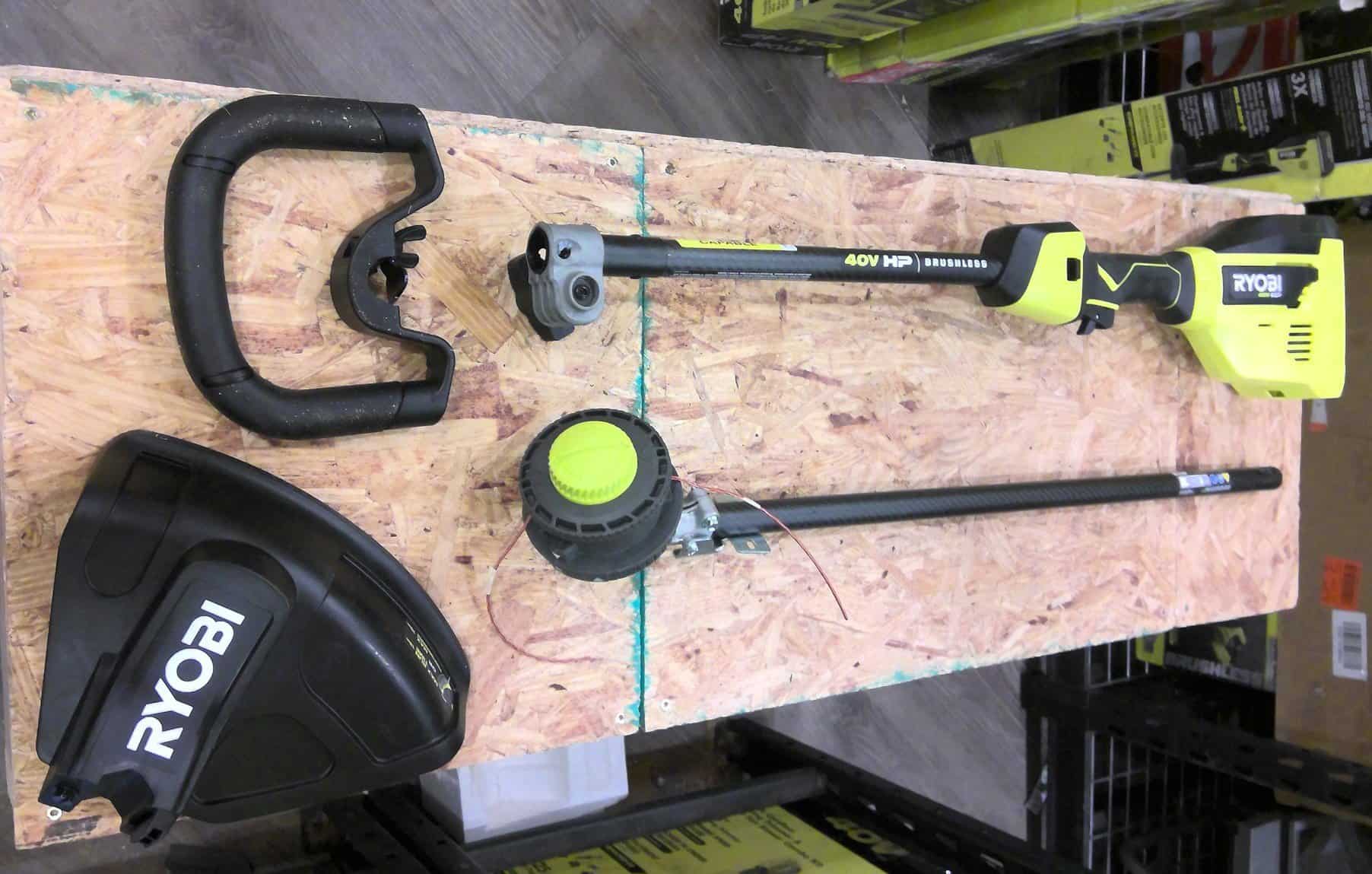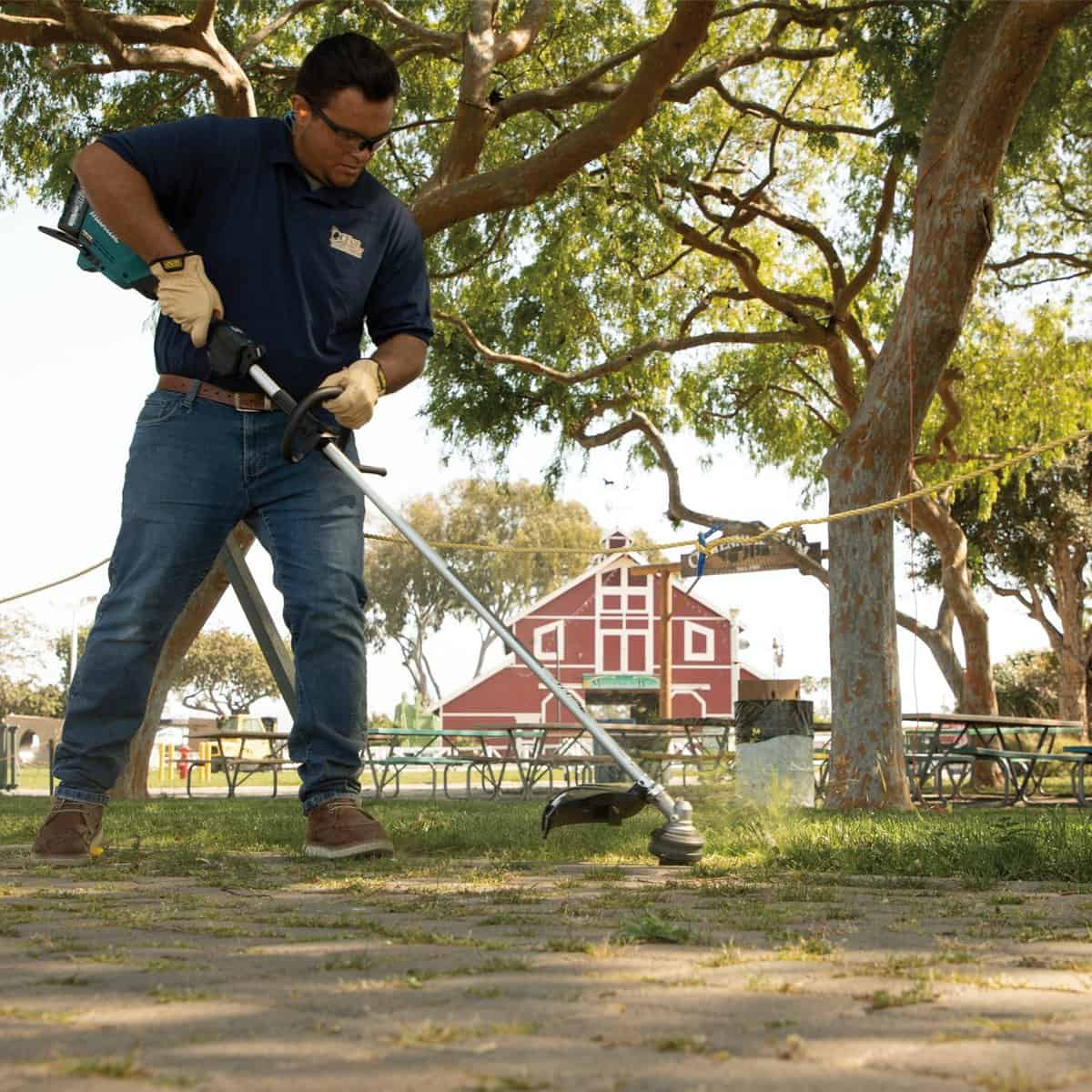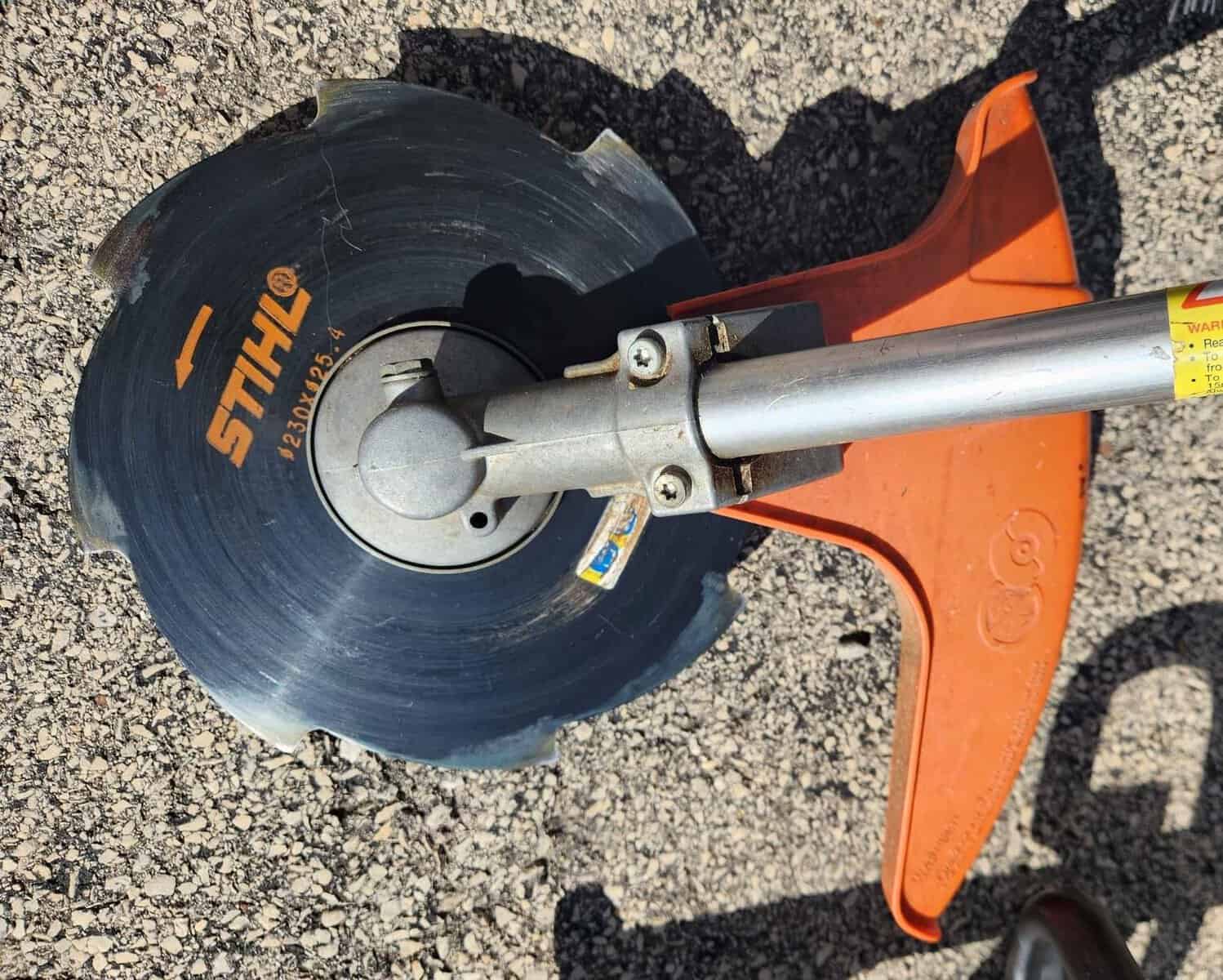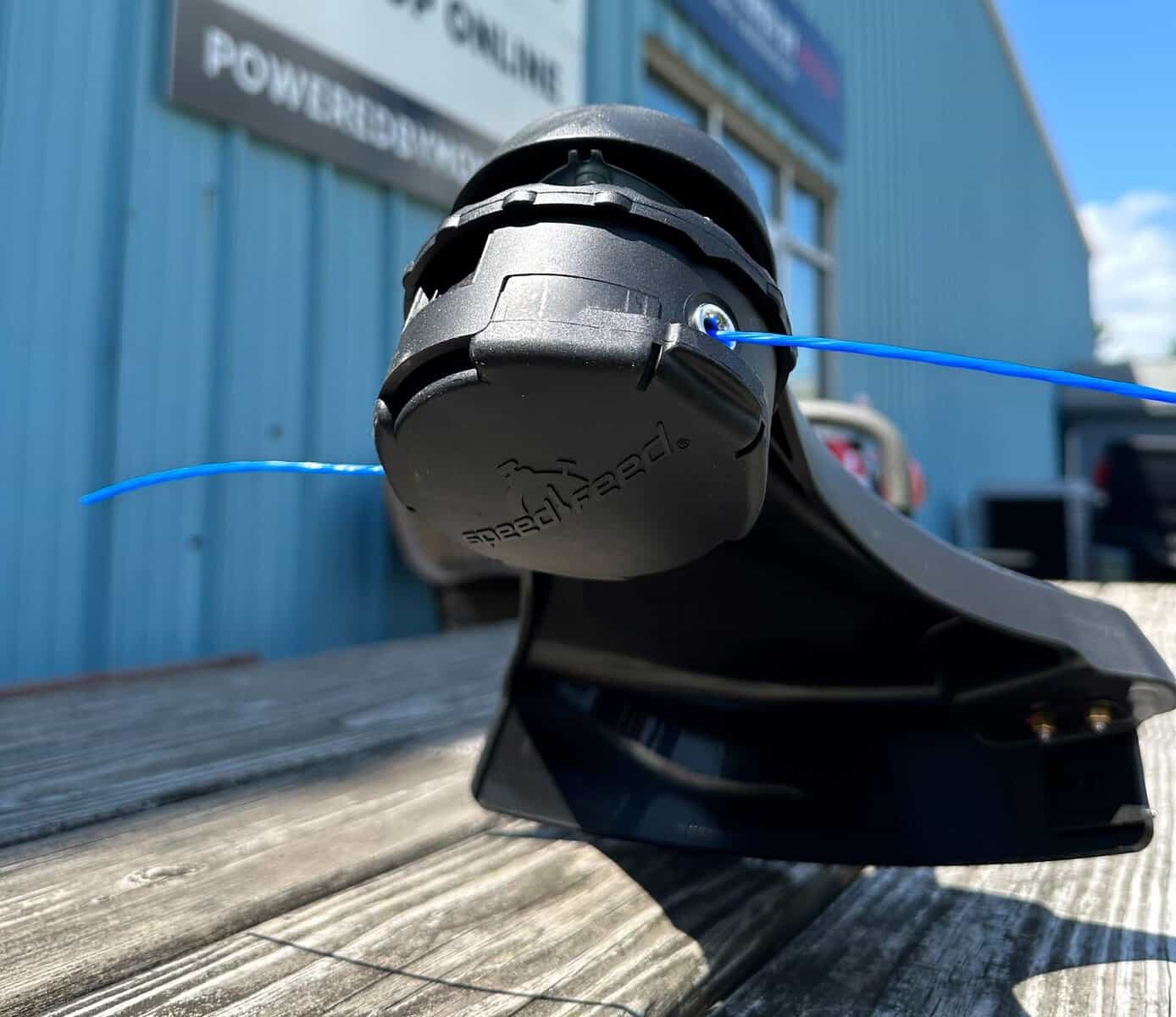Good day!
Are you pulled up short by the unexpected spinning of your trimmer head, even when it’s set to idle? I get it. Having experienced this common lawn care challenge personally and being informed that a stuck open clutch or corrosion are typically at fault, I’ve done extensive research on resolving the issue.
This blog post will provide practical tips for troubleshooting and fixing a trimmer whose head spins at idle – helping you return to tending your lawn without any hitches. Ready for some expert guidance? Let’s dive in!
Contents
Key Takeaways
- A trimmer head spinning at idle is usually caused by a stuck open clutch or corrosion in the clutch mechanism.
- To fix this issue, start by checking and cleaning the clutch. Replace the clutch spring if necessary or reposition it to ensure proper engagement.
- Troubleshoot common trimmer head problems, such as debris blockage, tangled trimmer line, damaged parts, faulty throttle cable, loose connections, and excessive idle speed.
- Regular maintenance and inspections are essential for preventing trimmer head spinning issues and ensuring smooth operation.

Understanding Why a Trimmer Head Spins at Idle
When a trimmer head spins at idle, it suggests that the clutch is stuck open and unable to retract.
Stuck open clutch
A crucial factor you need to consider in a situation where your trimmer head spins at idle is the chance of an open clutch stuck in place. Essentially, this is when the clutch fails to retract as it should due to various reasons, causing it to remain engaged even during idleness.
Most often than not, corrosion can be the culprit for your clutch getting stuck open; however, other issues like wear and tear or damage cannot be completely ruled out either. Now, you might wonder why this matters so much – well because if your trimmer’s clutch stays constantly engaged (or in simple words – remains “stuck”), it results in an uncontrollable movement of your trimmer head.
So before jumping into any conclusions about a faulty machine or broken parts, always inspect the state of your tool’s clutch first!
Corrosion in the clutch
Corrosion in your trimmer’s clutch is a sneaky culprit when it comes to the issue of a trimmer head spinning at idle. Simply put, this means the metal parts of your clutch are gradually deteriorating due to wear and tear or exposure to moisture.
Understandably, a corroded clutch won’t function optimally as it should.
For lawn owners like myself, this can pose quite an inconvenience and potentially disrupt regular yard maintenance. It could also bring about safety concerns as the string on the trimmer may not stop turning when it is supposed to.
The good news is that once identified, corrosion can be dealt with effectively through proper cleaning or potential replacement of certain parts. So if you notice any signs of rusting or decay in your clutch system, don’t ignore them – they could very well be causing your Trimmer Head Spins At Idle dilemma!
Read more: Unbreakable Trimmer Line: Discover the Secret

How to Fix a Trimmer Head That Spins at Idle
To fix a trimmer head that spins at idle, start by checking and cleaning the clutch mechanism. Then, replace the clutch spring if necessary or reposition it to ensure proper engagement.
By addressing these issues, you can prevent your trimmer head from spinning when it’s not supposed to.
Check and clean the clutch
You might be surprised to learn that a common reason why your trimmer head spins at idle is a dirty or corroded clutch. It’s crucial for the smooth operation of your lawn trimmer, so giving it a good clean can often solve the issue. Here’s a step-by-step guide on how to do this:
- Ensure you have switched off your trimmer and disconnected it from any power source.
- Remove the housing cover to get access to the clutch assembly.
- Look out for any signs of dirt, oil build – up or corrosion in the clutch.
- Use a dry cloth to wipe away surfaced dust and grim, then apply an appropriate cleaning fluid for more stubborn dirt.
- Be gentle when cleaning around the spring, as this part is fragile and can easily become damaged.
- Dry all parts thoroughly before reassembling, making sure not to leave any fluid residue which could attract new dust particles.
Replace the clutch spring
One of the key steps to fixing a trimmer head that spins at idle is replacing the clutch spring. Here’s how you can do it:
- Begin by disconnecting the spark plug wire to ensure your safety.
- Locate the clutch assembly on your trimmer. In some models, such as Stihl trimmers, you may need a Torx tool to remove the clutch shoes.
- Carefully remove the old clutch shoes from the assembly. Inspect them for any signs of damage or wear.
- Next, locate the clutch spring within the clutch assembly. This is responsible for maintaining tension and controlling the spinning of the trimmer head.
- Remove the old clutch spring and replace it with a new one of appropriate size and specifications for your specific trimmer model.
- Ensure that the new clutch spring is securely in place within the clutch assembly.
- Once you have replaced the clutch spring, reassemble all components of the trimmer in reverse order.
Reposition the clutch spring
If you’re facing the issue of your trimmer head spinning at idle, don’t fret! There is a solution. Repositioning the clutch spring can help resolve this problem effectively. Follow these steps to get your trimmer head back in working order:
- First, ensure that the trimmer is powered off and disconnected from any power sources.
- Locate the clutch assembly on your trimmer. This is usually positioned near the engine, and you may need to remove a cover or housing to access it.
- Identify the clutch spring within the assembly. This is responsible for engaging and disengaging the clutch pads that spin the trimmer head.
- Carefully remove the clutch spring from its current position by releasing any retaining clips or screws that hold it in place.
- Once removed, assess if there are any signs of damage or wear on the clutch spring. If so, consider replacing it with a new one to ensure optimal performance.
- Now, reposition the clutch spring by aligning it correctly with its designated slot or notch within the clutch assembly.
- Securely fasten the clutch spring back into place using any necessary clips or screws.
- Double – check to ensure that all parts are properly aligned and securely tightened before reassembling any covers or housings.

Troubleshooting Common Trimmer Head Problems
If you’re a lawn owner experiencing issues with your trimmer head, don’t worry – you’re not alone. Many people face common problems with their trimmer heads, but fortunately, most of them can be easily resolved. Here are some troubleshooting tips to help you fix those common trimmer head problems:
- Check for any debris or tangled vegetation around the trimmer head. Clearing away any blockages will ensure proper rotation and prevent the head from spinning at idle.
- Inspect the trimmer line for tangles or snags. If the line is caught on something, it can cause the trimmer head to spin erratically or not at all.
- Check the housing, clutch, shaft, and gear case for any signs of damage or wear and tear. Any cracks or broken parts can affect the performance of the trimmer head.
- Ensure that your throttle cable is functioning properly and is not stuck in one position. A faulty throttle cable can prevent power from reaching the trimmer head.
- Examine the clutch for any signs of damage or wear. If the clutch spring is worn out or damaged, it may need to be replaced to restore proper functionality.
- Verify that there are no loose connections between the engine and the trimmer head assembly. Loose connections can lead to poor power transmission.
- Adjust the idle speed of your trimmer if necessary. Excessive idle speed can cause the trimmer head to spin uncontrollably even when not in use.

Conclusion
In conclusion, if you find that your trimmer head spins at idle, it’s likely due to a stuck open clutch or corrosion within the clutch mechanism. Thankfully, there are several steps you can take to fix this issue, such as checking and cleaning the clutch, replacing the clutch spring, or repositioning the spring.
Remember to troubleshoot common trimmer head problems and consider adjusting the idle speed if necessary. By following these steps and staying proactive with maintenance, you’ll ensure your trimmer operates smoothly and efficiently during all lawn care tasks.
FAQs
1. Why is my trimmer head spinning at idle?
If your trimmer head is spinning at idle, it could be due to a couple of reasons. One possibility is that the clutch mechanism is not disengaging properly, causing the trimmer head to continue rotating even when the throttle trigger is released. Another potential cause could be a faulty carburetor or throttle linkage, which may need adjustment or replacement.
2. How can I fix my trimmer head from spinning at idle?
To fix a trimmer head that spins at idle, you should first check the clutch system and ensure it is functioning correctly. If there are any issues with worn-out parts or excessive friction within the clutch assembly, they may need to be replaced or lubricated accordingly. Additionally, inspecting and adjusting the carburetor’s idle speed screw can help regulate engine RPMs and prevent unwanted rotation of the trimmer head.
3. Can I repair my trimmer head myself?
Repairing a trimmer head yourself depends on your level of experience and comfort with mechanical work. If you have knowledge about small engines and feel confident in troubleshooting and making adjustments, you may be able to address certain issues like adjusting the carburetor or replacing worn-out parts. However, for more complex problems or if you are unsure about your abilities, it’s always recommended to consult a professional technician who specializes in outdoor power equipment repairs.





